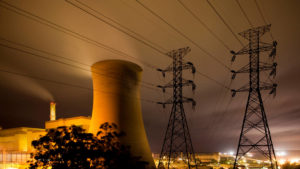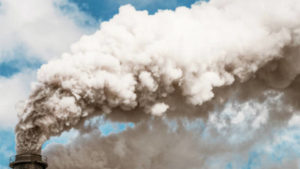Emission Control: Australia has no offshore wind farms. Can it be a major part of our energy mix?

Picture: Ashley Cooper/The Image Bank via Getty Images.
Our Emission Control column wraps all the news driving ASX stocks with exposure to renewable energy stocks.
Offshore wind lacks support, but can it be a major player in our energy mix?
Some areas off Australia’s coastline are windier than the North Sea, yet Australia is yet to host a single offshore wind farm.
Researchers from the Blue Economy Cooperative Research Centre say in a major report that as much as 2233GW of offshore wind energy could feasibly be installed in Australia, many times the power required in the grid.
This could all be achieved within 100km of current substations and excluding environmentally restricted and low wind areas.
The key, however, will be providing the regulatory framework to make it happen.
“Offshore wind has the potential to contribute to the energy system through higher capacity factors and diversity of energy supply,” the CSIRO’s Mark Hemer, project leader for the BECRC said.
“This is particularly important under ‘energy superpower’ scenarios including mass electrification and hydrogen production.”
The big knock on renewable energy now that new build costs are cheaper than coal is that it is intermittent, or “not dispatchable” in the Morrison Government’s parlance.
According to the researchers, in key coal energy districts like Newcastle, Gladstone and Gippsland, which is the site of the proposed 2.2GW Star of the South offshore wind farm, there are strong winds offshore at times when onshore wind and solar are low.
“A mix of renewables will help maintain a consistent, reliable supply in future high penetration renewable energy scenarios,” they said.
While offshore wind is considered more expensive than onshore wind, in the UK it is believed the cost could be comparable with onshore wind by the 2030s at about 1.2x, considerably lower than the projection of 2.7x by 2050 in Australia’s GenCost report.
Max average wind speeds south of Tasmania are as high as 12m/s, well above the average of 10m/s in the North Sea, which is home to dozens of established offshore wind farms.
There is a caveat, as in most offshore wind farms operating currently the turbines are fixed into the seabed below. To access many of Australia’s best resources, floating turbines are required, although that technology has recently been commercialised.
While 25GW of offshore wind farms are being planned by private interests around the country, the BECRC has called on the Government to deliver a regulatory and financial framework to support their development.
Among other things, that includes incorporating them into energy strategies and planning like the national hydrogen strategy and allocating funding to the CEFC and ARENA dedicated to supporting offshore wind farms.
Up to US$173 trillion needed to hit net zero: BloombergNEF
A couple days ago BloombergNEF was telling us we were not doing enough to meet emissions reductions targets, with fossil fuel subsidies actually growing in recent years in countries like Australia.
Now they’ve put a price on the investment needed to get to “net zero” by 2050, and it’s not for the faint-hearted bureaucrat.
They say as much as US$173 trillion is needed, with a number of key investment milestones required by 2030 just to be on track.
That includes 505GW of new wind power each year between now and 2030, about 5.2x the 2020 total, 455GW of solar PV (3.2x) and 245GWh of batteries (26x) and 35 million new EVs on the road (11x).
Coal-fired generation will need to drop by 72% on 2019 levels with 70% of all coal-fired capacity retired, and electricity use for low temperature heat in industry would need to increase by 71%.
BloombergNEF thinks three different scenarios could be used to bring the world to net zero by 2050: green, an economy prioritising technologies like green hydrogen where renewable energy makes up 70% of all power sources; red, a global economy dominated by nuclear power which would require a 19-fold increase in nuclear generating capacity; and grey, dominated by carbon capture and storage, with fossil fuels still making up 52% of the energy mix.
In 2019 fossil fuels accounted for 83% of the global energy mix.
Regardless of the uncertainty around which technology wins out, the cost will be far greater than what countries are currently investing in the energy transition.
BNEF estimates investment in energy supply and infrastructure amounts to between $92 trillion and $173 trillion over the next 30 years.
Annual investment would need to more than double to achieve this, rising from around $1.7 trillion per year today, to $3.1-$5.8tn per annum on average over the next 30 years.
“The capital expenditures needed to achieve net zero will create enormous opportunities for investors, financial institutions and the private sector, while creating many new jobs in the green economy,” BNEF CEO Jon Moore said.
Global energy related emissions would need to drop 30% below 2019 levels by 2030 and 75% by 2040.
Emissions rose an average 0.9% a year from 2015-2020. And that period included a drop in 2020 almost entirely enforced by the decline in travel and economic activity during the pandemic.
Green energy sector has a quiet week
ASX green energy stocks
Scroll or swipe to reveal table. Click headings to sort.
| CODE | COMPANY | PRICE | 1 WEEK RETURN % | 1 MONTH RETURN % | 6 MONTH RETURN % | 1 YEAR RETURN % | MARKET CAP |
|---|---|---|---|---|---|---|---|
| IRD | Iron Road Ltd | 0.25 | -5.7% | -5.7% | -10.7% | 240.7% | 205,992,613 |
| PRM | Prominence Energy | 0.012 | -14.3% | -7.7% | 20.0% | 54.3% | 12,038,751 |
| NEW | NEW Energy Solar | 0.805 | 0.6% | -10.6% | -13.4% | -24.8% | 298,444,365 |
| SKI | Spark Infrastructure | 2.6 | 5.1% | 19.8% | 22.1% | 11.6% | 4,580,430,671 |
| IFT | Infratil Limited | 7.08 | -1.0% | 0.4% | 4.0% | 53.9% | 5,155,900,481 |
| FMG | Fortescue Metals Grp | 25.13 | -0.3% | 15.2% | 1.0% | 50.1% | 77,867,022,776 |
| TLT | Tilt Renewables Ltd. | 7.55 | -0.5% | 2.3% | 37.3% | 120.8% | 2,863,937,518 |
| AST | AusNet Services Ltd | 1.82 | -1.1% | 2.0% | 4.9% | 3.7% | 6,932,235,720 |
| PGY | Pilot Energy Ltd | 0.082 | 0.0% | 0.0% | 90.7% | 331.6% | 31,028,877 |
| RFX | Redflow Limited | 0.06 | -1.6% | -3.8% | 73.1% | 142.4% | 69,617,547 |
| AVL | Aust Vanadium Ltd | 0.02 | 5.3% | 0.0% | -16.7% | 81.8% | 52,760,859 |
| PH2 | Pure Hydrogen Corp | 0.19 | 5.6% | -7.3% | -2.6% | 227.6% | 54,928,276 |
| MEZ | Meridian Energy | 5.05 | 2.9% | 5.9% | -29.3% | 14.0% | 6,398,091,698 |
| LIO | Lion Energy Limited | 0.044 | -2.2% | -15.4% | 29.4% | 214.3% | 13,282,086 |
| GEV | Global Ene Ven Ltd | 0.062 | -8.8% | -16.2% | -34.0% | -3.1% | 27,579,212 |
| HZR | Hazer Group Limited | 0.89 | 1.7% | -3.3% | -30.2% | 119.8% | 122,081,234 |
| HXG | Hexagon Energy | 0.074 | -1.3% | 1.4% | -38.3% | 34.5% | 32,559,009 |
| QEM | QEM Limited | 0.175 | 2.9% | 6.1% | 105.9% | 59.1% | 16,500,000 |
| PRL | Province Resources | 0.135 | -3.6% | 0.0% | 575.0% | 536.8% | 150,141,574 |
| MPR | Mpower Group Limited | 0.079 | 0.0% | 8.2% | 33.9% | 203.8% | 16,399,496 |
| RNE | Renu Energy | 0.057 | -1.72% | -28.75% | -5.0% | 185.00% | 7,950,000 |
| CEN | Contact Energy | 8.25 | 4.96% | 9.27% | -4.62% | 47.58% | 6,066,611,916 |
Companies operating in the renewable energy and hydrogen space have taken a back seat in recent weeks, but a handful have performed well.
Energy infrastructure firm Spark Infrastructure (ASX:SKI) shot up last week on news it had received (and rejected) a $5 billion takeover bid from the Ontario Teachers Pension Fund and Kolhberg Kravis Roberts.
The same day Spark revealed details of a proposed 2.5GW solar and wind hub on the route of the new interconnector between Wagga Wagga in New South Wales and Robertstown in South Australia.
“The proposed Dinawan Energy Hub is an exciting new project that will accelerate the development of new renewable generation in the South-West REZ through the establishment of this large, corner-stone project. It will unlock significant renewable generation capacity consisting of wind, solar and battery energy storage across NSW in the coming years, providing resource diversity to renewable generation planned in the other REZs,” Spark MD Rick Francis said.
Contact Energy (ASX:CEN) meanwhile has joined with Meridian Energy (ASX:MEZ) to propose what would be the “world’s largest green hydrogen” plant at Southland in New Zealand.
With a proposed capacity of 600MW, the plant would be located at the site of the Manapouri Power Station that currently supplies power to Rio Tinto’s Tiwai Point Aluminium Smelter, which is due to close in 2024.
Related Topics

UNLOCK INSIGHTS
Discover the untold stories of emerging ASX stocks.
Daily news and expert analysis, it's free to subscribe.
By proceeding, you confirm you understand that we handle personal information in accordance with our Privacy Policy.








